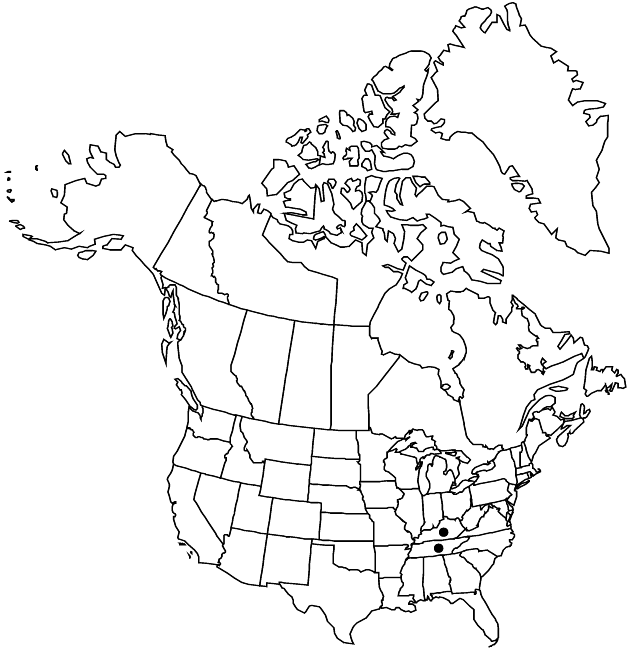Silphium wasiotense
Sida 13: 285, figs. 1, 2e–h, 3. 1989.
Common names: Appalachian rosinweed
Endemic
Revision as of 22:02, 29 July 2020 by imported>Volume Importer
Plants caulescent, 60–150 cm; fibrous-rooted. Stems terete, hispid (never glaucous). Leaves: basal persistent, petiolate; cauline opposite, petiolate (proximal) or sessile (distal); blades cordate, deltate, lanceolate, or ovate, 1–28 × 1.5–20 cm, sometimes (proximal) lobed, bases auriculate, cordate, or truncate (proximal and distal), ultimate margins toothed or entire, apices acute to acuminate, faces hispid. Phyllaries 12–14 in 2–3 series, outer reflexed, apices acute to obtuse, abaxial faces hispid. Ray-florets 6–14; corollas yellow. Disc-florets 30–45; corollas yellow. Cypselae 4–8 × 4-6 mm; pappi 0.5–1.5 mm.
Phenology: Flowering late summer–fall.
Habitat: Dry, open sites in mesic forests, along roadcuts
Elevation: 300–600 m
Discussion
Selected References
None.
Lower Taxa
None.
"broader" is not a number.
... more about "Silphium wasiotense"
hispid +
introrse +
connate +
herbaceous +
acute;obtuse +
scarious +
absent +
hirsute +
papillate +
bristlelike +
continuous +
petiolate +
persistent +
elliptic +
lobed;ovate;lanceolate;ovate;lanceolate;deltate;cordate +
winged;ribbed;winged;ribbed +
1;15 +
stigmatic +
absent +
opposite +
Appalachian rosinweed +
zygomorphic +
yellow +
winged +
dimorphic +
staminate +
staminate +
straight +
hispid +
distinct +
proximal +
1;5 +
bisexual +
dispersed +
singly +
discoid +
indeterminate +
surrounding +
campanulate;hemispheric +
deltate +
reflexed +
2-carpellate +
inferior +
attached +
anatropous +
persistent +
fragile +
falling +
absent +
tough +
thick +
absent +
connate +
persistent +
distinct +
falling +
Sida +
1989 +
pistillate +
absent +
fertile +
paleate +
flat;slightly convex +
fibrous +
exalbuminous +
modifed +
2;3 +
Endemic +
alternate +
branched +
erect +
hispid +
terete +
continuous +
2-branched +
papillate +
Silphium wasiotense +
Silphium +
species +
cylindric +
narrow +
much shorter +
cylindric +
shorter to longer than campanulate +
perennial +
